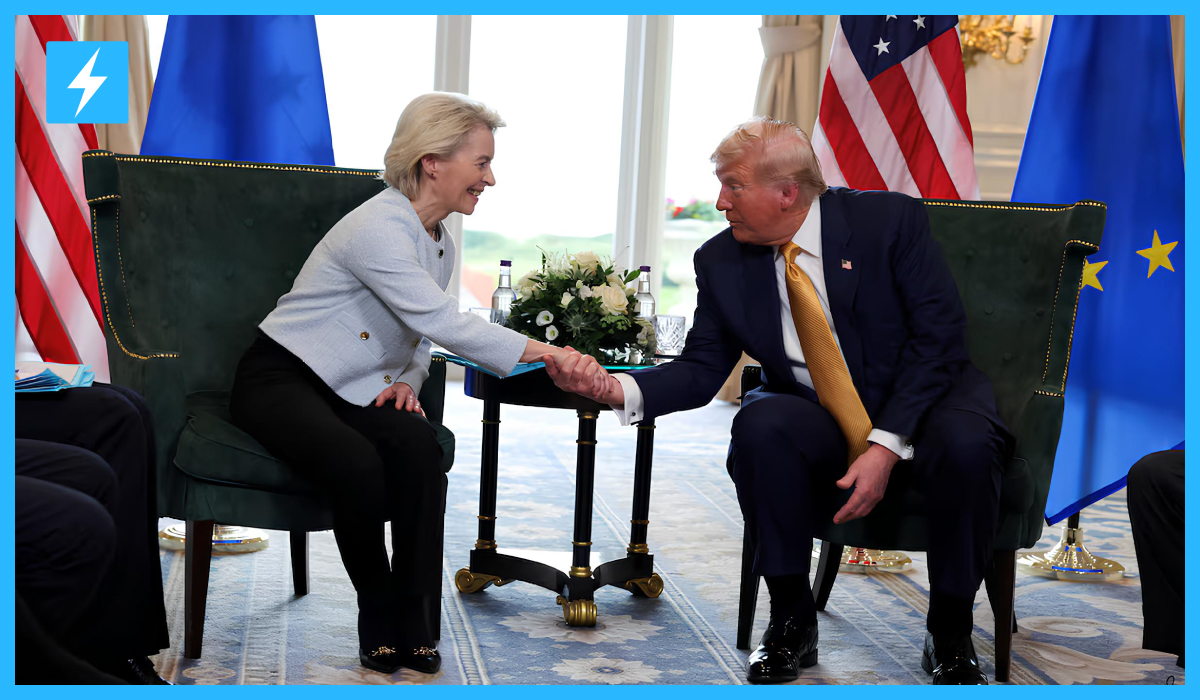A US Agency for International Development in-house report has put to rest for good what little proof there was of large-scale Hamas theft of Gaza aid. The findings clearly state there is no evidence of massive Hamas theft of Gaza aid, challenging long-held assumptions. This report, which is very much out of the blue, breaks the base on which both Israel and the US have stood — that the Gaza Humanitarian Foundation’s military aid distribution is necessary.
Major Government Study Reveals Startling Truth
Investigators report that they have found no reports which claim Hamas was involved in the theft of U.S. funded aid which we got from confidential presentations to Reuters.
This is a game changer in terms of what we know of the Gaza aid theft which has been the main issue in international discussion for almost two years. We looked at in depth the reports put out by UN agencies and humanitarian organizations which report in to the Gaza situation which in turn puts a great deal of Israeli and American claims which put forth systematic Hamas action in aid diversion into question.
State Department Refutes Reports Which Are Unsubstantiated
Despite our in-depth analysis, State Department reports on Hamas’ actions remain persistent. A spokesperson disputed USAID’s findings, claiming they had video evidence of Hamas looting — footage that was never produced. They also accused traditional humanitarian organizations of covering up “aid corruption,” yet failed to provide any proof. White House spokesperson Anna Kelly went further, questioning the report’s legitimacy and suggesting it was “likely produced by a deep state element” to undermine the Trump administration’s humanitarian efforts. This reflects the broader politics fueling the narrative — despite the USAID’s own findings that there is no evidence of massive Hamas theft of Gaza aid.
Gaza Humanitarian Foundation Controversy Intensifies
The issue is put under very bright glare by the report which has made the Gaza Humanitarian Foundation a key element of present U.S. policy in Gaza. The GHF which is a private aid group made up of armed former U.S. military veterans and for profit logisticians has been running four militarized distribution sites since May 27, 2025. Also reported is that this system breaks away from basic humanitarian tenets of neutrality and impartiality.
The Trump admin put forward a Gaza aid policy which at the time of the $30 million to GHF approval did away with standard vetting which is required by regulation to screen staff and sub contractors for ties to terrorist groups. This decision is also a growing point of contention which is brought to light by the USAID analysis.
The United States along with over 170 other primary aid groups has turned away from GHF’s appeal for support which we see as a violation of humanitarian rules and the issue of aid which has become too military in nature. The UN reports over 1,000 deaths at the hands of Israeli forces near GHF’s distribution points and out of that number 674 which the UN Office of the High Commissioner for Human Rights reports died at GHF sites.
Israeli Military Role in Aid Losses
Also in large part what the USAID report found was a lack of support for reports of massive Hamas theft of Gaza aid which at the same time saw that Israeli military actions played a role in at least 44 out of 156 reported aid theft cases. Also included in this was the fact that the military actions caused, either directly or indirectly, the loss of aid which included results of airstrikes, evacuation orders, and that the military gave directives which forced aid convoys to run on unsafe routes against the advice of partner organizations.
When in the analysis it was reported that aid organizations which asked for safer delivery routes in which to transport their supplies and which put forth the request to avoid high risk of theft instead had the Israeli forces that were involved forced them to use more dangerous routes, in fact putting aid supplies at a greater risk of looting. This trend puts forth a systematic method which is put in place to complicate aid distribution instead of protect it.
Social Media Reactions and Public Response
Hamas’ aid mismanagement is mainly reported by Israel and their supporters.
Twitter and other social media users have reported widely on the Reuters exclusive report which has in turn been brought up by academics and policy experts in terms of its impact on US foreign policy. We see large scale discussion of the media’s role in reporting the Palestinian humanitarian crisis and also question of how in the past we did enough to put a critical eye to Israeli reports.
Instagram posts by humanitarian groups report that USAID’s analysis which found out there is no large scale Hamas theft of Gaza aid they use this to push for policy change and greater accountability. Also we see on social media a public which is becoming more aware of the gap between what is reported officially and what the facts tell us.
Devastating Humanitarian Reality in Gaza
In that context which also includes to put it into perspective these findings are of great importance. The World Food Program reports that in Gaza which has a population of 2.1 million — 25% of which is at risk of famine over thousands of people which include children and the vulnerable are dealing with acute malnutrition. Also we see from the World Health Organization and health care professionals in Gaza that we are reporting starvation deaths of children and vulnerable populations.
The in 2025 which saw a 11 week aid blockade of the Palestinian people by Israel that played out from March of that year saw also large scale restriction of food, medicine and basic supplies. At the time of lifting the block via the GHF system which took over from the UN run distribution points we saw a reduction from 400 plus distribution sites to just four which also became very much military outposts thus creating dangerous points of access which in turn forced desperate civilians to travel through conflict areas.
Political Implications and Policy Consequences
USAID’s report which came out that they did not find large scale theft by Hamas of Gaza aid is a game changer in terms of US Middle East policy. The report which was put together before the Trump admin took out all foreign aid and began to break up USAID, putting its functions into the State Department. That timing is what makes one wonder if the report’s results played a role in the agency’s restructure.
Researchers reported on the study’s limitations which included that they did not find out in which cases if at all that Hamas was a systematic divisor of aid resources although they did present that some aid may have gone through to Hamas affiliated administrative officials. This also went against the Israeli military’s reports that which claimed up to 25% of aid was taken by Hamas.
Expert Analysis and International Response
International human rights experts for some time have put forth that which of Hamas’ humanitarian aid is being stolen is a system issue. USAID’s report supports what many UN agencies and international NGOs have been saying which is there isn’t a wide scale basis in fact for the diverting which is reported.
Of a review of 156 incidents it was found that 63 were from unknown actors, 35 from armed groups which do not tie into designated terrorist organizations, 25 which are attributable to unarmed civilians, 11 to corrupt subcontractors, and five in which aid workers were the ones affected. This does not support reports of Hamas’ systemic control of aid.
USAID’s report which came up with no proof of large scale Hamas theft of Gaza aid is a game changer in terms of what we know of the real picture of humanitarian assistance in Gaza. As the international community grapples with this info the basic precepts which we have been using for current aid delivery are put under unprecedented scrutiny which in turn may see a re think of how we do humanitarian assistance in what is the world’s most desperate crisis zone.
Growing reportage of which puts forth that political narratives have out done empirical reality which in turn has had devastating results for Gaza’s civilian population that is caught between rival accounts of aid output while also experience unprecedented levels of hunger and deprivation.
News Source: Channelnewsasia USA Today CNN




